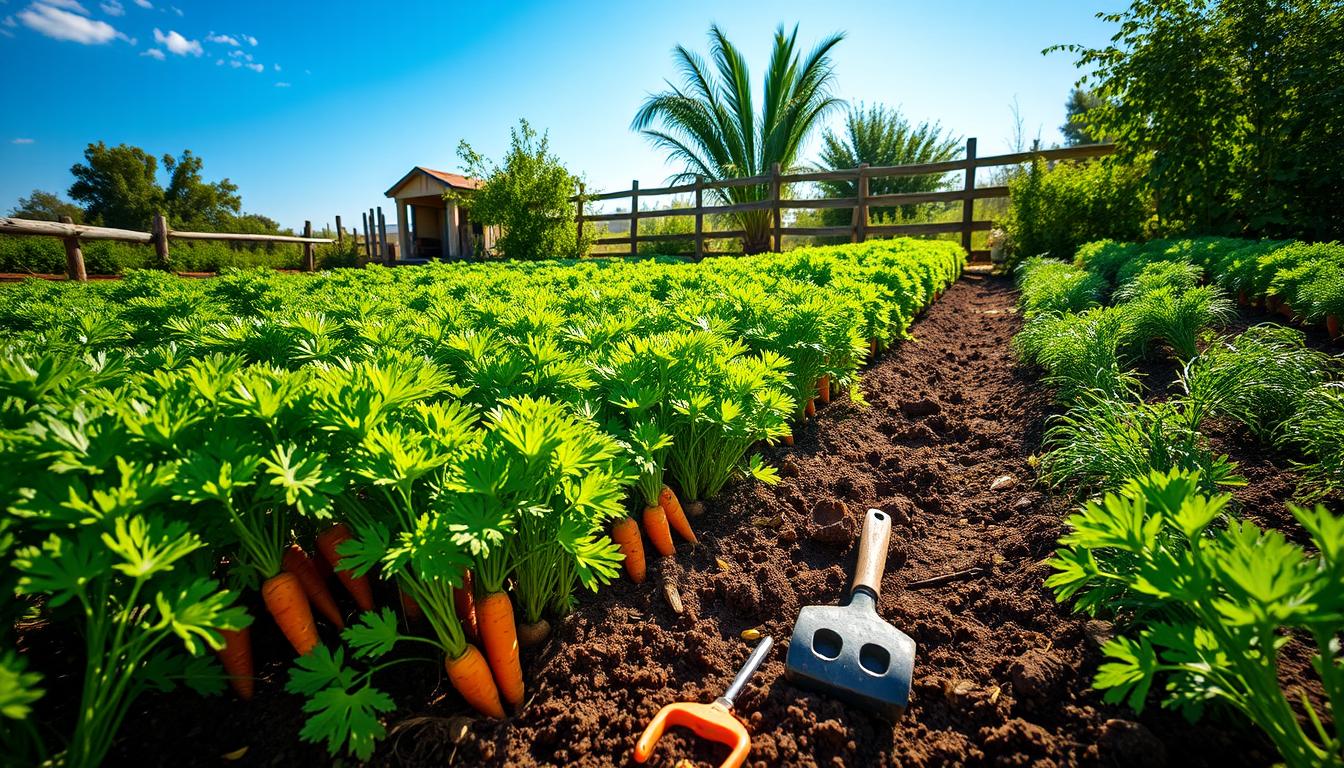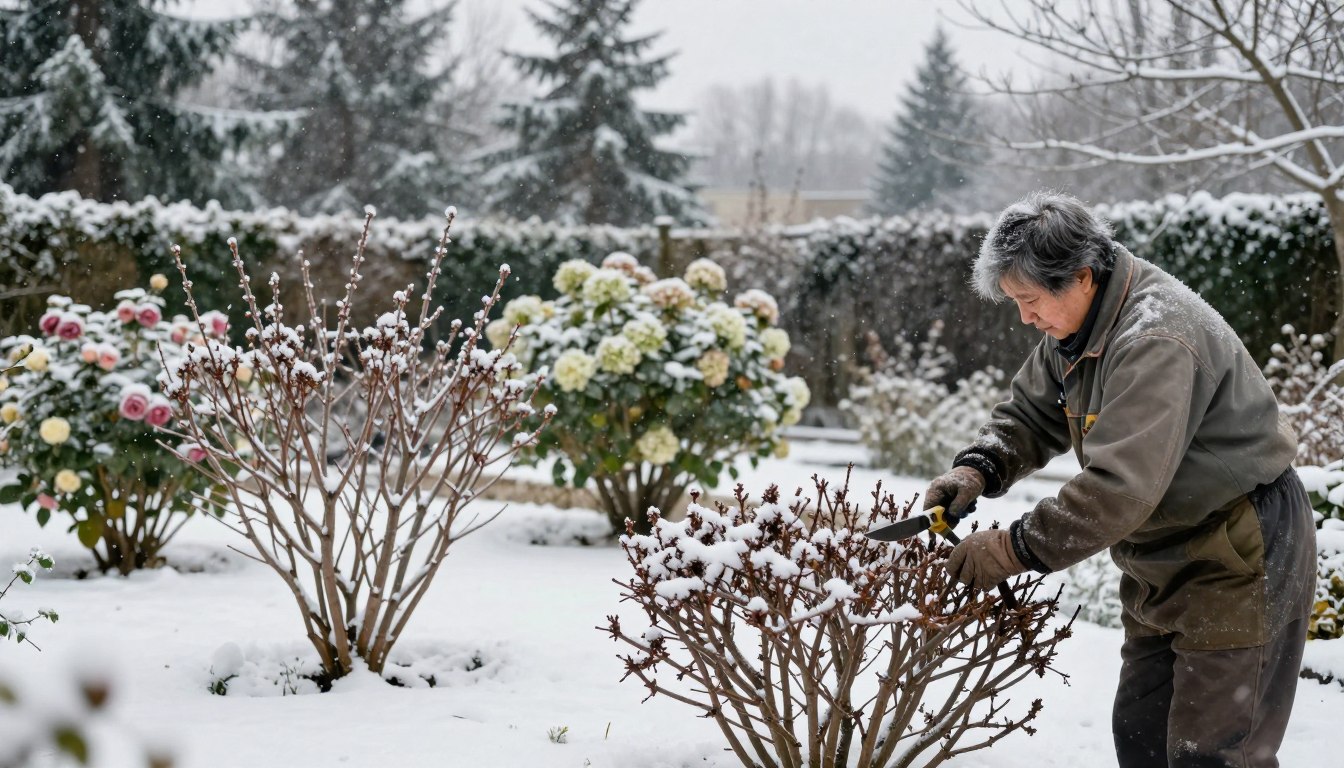Are you eager to grow a bountiful carrot harvest but unsure where to start? Look no further! This guide is your roadmap to growing carrots, filled with expert tips. It’s perfect for both new gardeners and those looking to improve their skills. You’ll learn how to plant, care for, and harvest the sweetest, crunchiest carrots.
Key Takeaways
- Discover the essential steps for planting and growing healthy carrot crops
- Learn how to choose the right soil, carrot varieties, and planting techniques for your garden
- Explore the best practices for caring for carrot plants, from watering to weed control
- Uncover the optimal time and methods for harvesting your carrot bounty
- Gain the confidence to become a successful carrot cultivator, even as a beginner gardener
Introduction to Growing Carrots
Carrots have been a favorite root vegetable for thousands of years. The orange carrot we know today first showed up in the Netherlands in the 1600s. Now, gardeners can grow many heirloom varieties, like purple and golden yellow, each with its own taste and health benefits.
About Carrots
Carrots love cool weather and well-drained, rich soil. They’re packed with vitamins A, K, and B6, and beta-carotene. This makes them a great choice for any garden, especially for beginners who want to grow something easy and rewarding.
The history of carrots goes back to Southwestern Asia and Europe. They’ve changed a lot over time, now coming in many shapes, sizes, and colors. Whether you like the classic orange or want to try something new, there’s a carrot for everyone.
When starting to grow carrots, it’s key to know about the different types. This helps you pick the best ones for your area, soil, and taste. This way, you’ll get a big harvest of tasty carrots.
“Carrots are not only delicious, but they’re also incredibly versatile. From roasted to raw, they can be incorporated into a wide range of dishes, making them a staple in many households.”
Planting Carrots
Growing tasty carrots begins with the right planting methods. Carrots do best in cool weather, planted 2-3 weeks before the last spring frost. The soil should be loose, sandy, and rock-free to help the roots grow straight.
To ensure carrot seed germination, plant the seeds 1/4 inch deep and 2-3 inches apart. Keep the soil moist until the seeds sprout, which takes 14-21 days. Once the seedlings have several true leaves, thin them to 3-4 inches apart to allow the roots to grow fully.
If you have limited space, carrot planting in containers is a good choice. Pots at least 10-12 inches deep can support carrot growth. Just remember to follow the same planting guidelines as for in-ground cultivation.
Whether planting in the ground or a container, the goal is to create perfect conditions for carrots. With the right carrot planting techniques, you’ll soon enjoy a rich harvest.
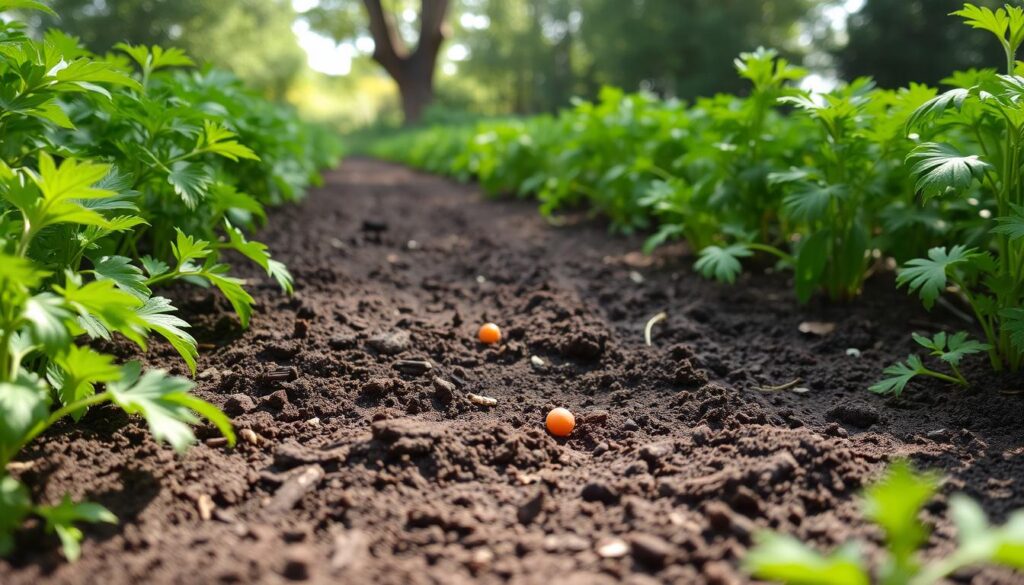
The Ultimate Guide to Growing Carrots: Tips for Beginners
Soil Preparation
Carrots love soil that’s loose and full of nutrients. It should be rock-free and debris-free. Before you plant, make sure the soil is ready.
Till the soil to a depth of 10 inches. Add compost or other organic matter to it. This makes the soil perfect for growing carrots.
Carrot Varieties
For beginners, some great carrot varieties are Danvers 126, New Kuroda, Nantes, and Little Finger. These carrot varieties are known for their sweet taste and growth in various carrot growing conditions. Planting carrots with radishes can also help.
It’s key to focus on carrot soil requirements and amending soil for carrots. By preparing the soil and picking the right best carrot varieties, you’ll get a great harvest.
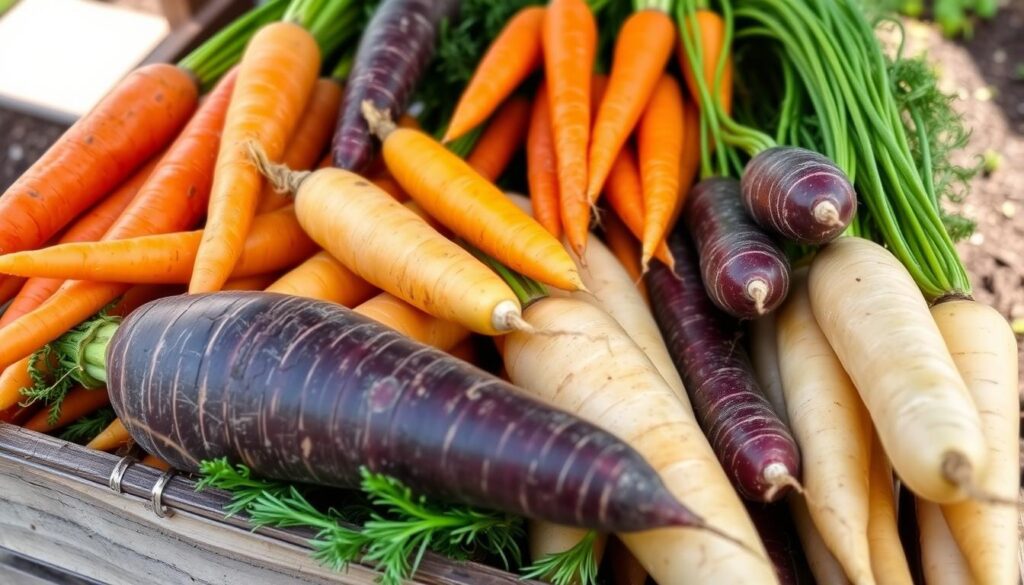
Growing carrots is a rewarding experience that can provide you with a steady supply of fresh, flavorful vegetables for your home garden.”
Caring for Carrot Plants
Keeping carrot plants healthy is key. They need about 1 inch of water each week. This can come from rain or a hose. Too much water can cause roots to grow funny.
Light fertilizing with a low-nitrogen formula helps roots grow strong. It’s important to keep weeds away from carrots. Pull weeds by hand to avoid harming the roots.
Managing pests like carrot flies is crucial. Use row covers to keep them away. Organic gardeners should stick to natural methods for pest control.
“With the right care and attention, you can enjoy a bountiful carrot harvest from your own garden.”
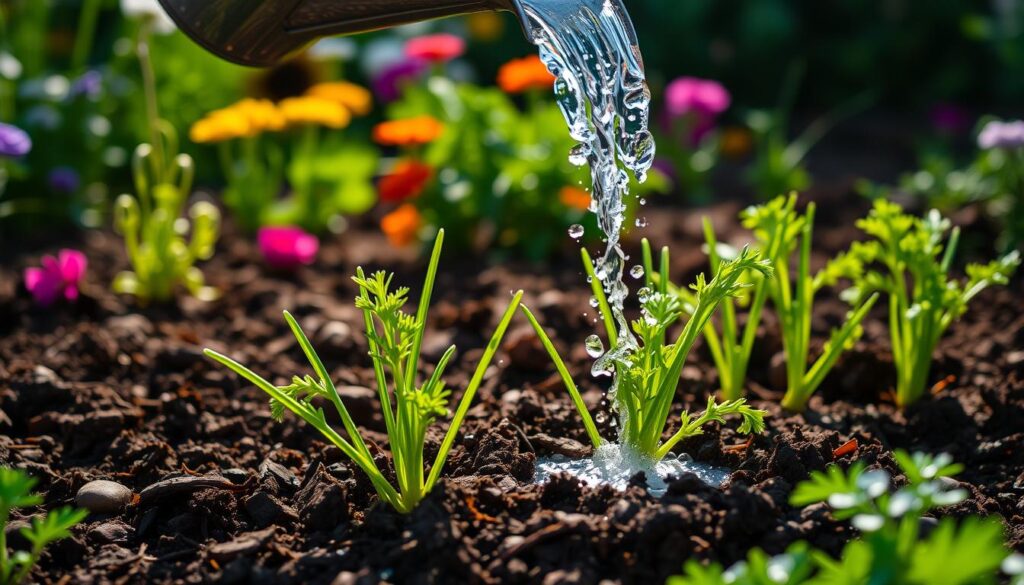
Follow these tips for watering, fertilizing, controlling weeds, and managing pests. With a bit of effort, your carrots will thrive. Enjoy a healthy harvest from your garden.
Harvesting Carrots
Knowing when and how to harvest carrots is key for their best flavor and quality. Carrots are ready 70-100 days after planting, when they’re as wide as your thumb. The leaves should also be fully grown.
When to Harvest
To see if carrots are ready, gently move some soil around the base. They’re ready when they’re about as wide as your thumb. This is the best time to harvest.
How to Harvest
Harvest carrots by loosening the soil with a garden fork. Then, pull them up by the greens. Be gentle to avoid damaging the roots. After pulling, remove the carrot tops to stop moisture loss.
For longer storage, keep carrots in moist sand or under mulch. They can last months in a cool, humid place.
| Carrot Harvest Tips | Carrot Storage |
|---|---|
|
|
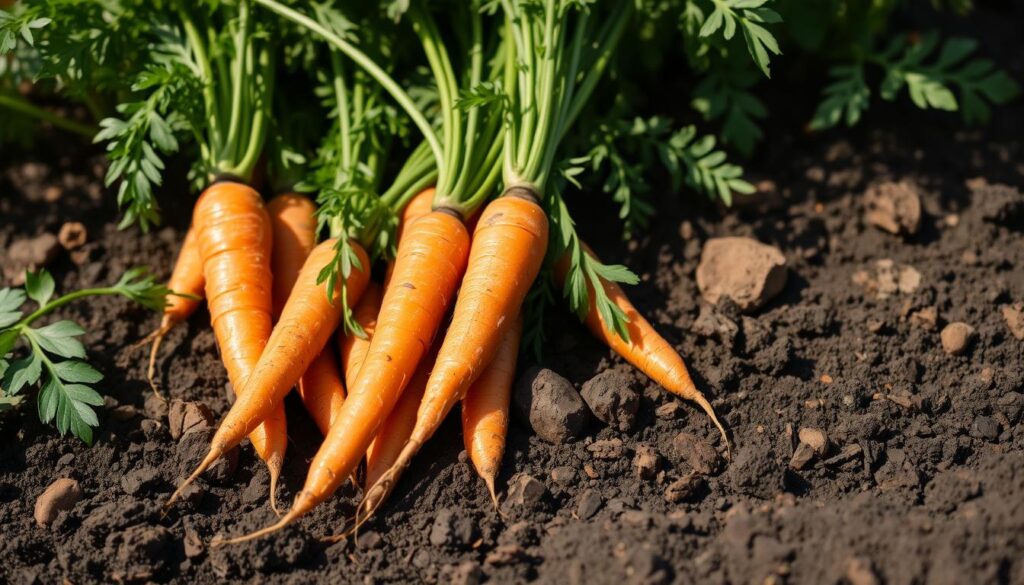
By following these tips, you can enjoy a bountiful and tasty carrot crop. It will last for months in storage. Happy harvesting!
Conclusion
Growing tasty, healthy carrots at home is easy for beginner gardeners with the right steps. This guide covers everything from picking the best spot and preparing the soil to caring for and harvesting your carrots. It’s perfect for anyone new to vegetable gardening or looking to improve their carrot-growing skills.
Even if you’re new to gardening, you can still enjoy the fresh taste and health perks of homegrown carrots. By learning how to grow root crops and produce food at home, you can enjoy a steady supply of delicious, nutritious carrots from your own garden.
So, why wait? Start your carrot growing adventure and aim for a big, homegrown harvest. This ultimate guide will help you on your way to becoming a beginner gardening success.
FAQ
Q: What are the key benefits of growing carrots at home?
A: Carrots are packed with vitamins A, K, and B6, plus beta-carotene. They’re super nutritious. Growing them at home means you get fresh, tasty carrots and control over how they’re grown.
Q: What are some of the most popular carrot varieties for beginner gardeners?
A: Beginners love Danvers 126, New Kuroda, Nantes, and Little Finger. These carrots are easy to grow, taste great, and do well in different soils.
Q: How do I prepare the soil for planting carrots?
A: Carrots need loose, rich soil without rocks or debris. Till the soil 10 inches deep and add compost or organic matter. This makes the soil perfect for growing straight, healthy carrots.
Q: When is the best time to plant carrots?
A: Carrots grow best in cool weather, 2-3 weeks before the last spring frost. Plant the seeds 1/4 inch deep and 2-3 inches apart. Keep the soil moist until they sprout in 14-21 days.
Q: How do I care for my carrot plants during the growing season?
A: Carrots need about 1 inch of water a week, either from rain or irrigation. Lightly fertilize with a low-nitrogen formula 5-6 weeks after planting. Also, keep weeds away since carrots can’t compete with them.
Q: How do I know when it’s time to harvest my carrots?
A: Carrots are ready 70-100 days after planting, when they’re as wide as your thumb. The leaves should be fully grown. Check by gently brushing soil around the plants.
Q: How do I properly harvest and store my carrot crop?
A: Harvest carrots by loosening the soil with a fork and pulling them up. Be gentle to avoid damaging the roots. After pulling, remove the tops to prevent moisture loss. Store them in moist sand or under mulch in a cool, humid place for months.


